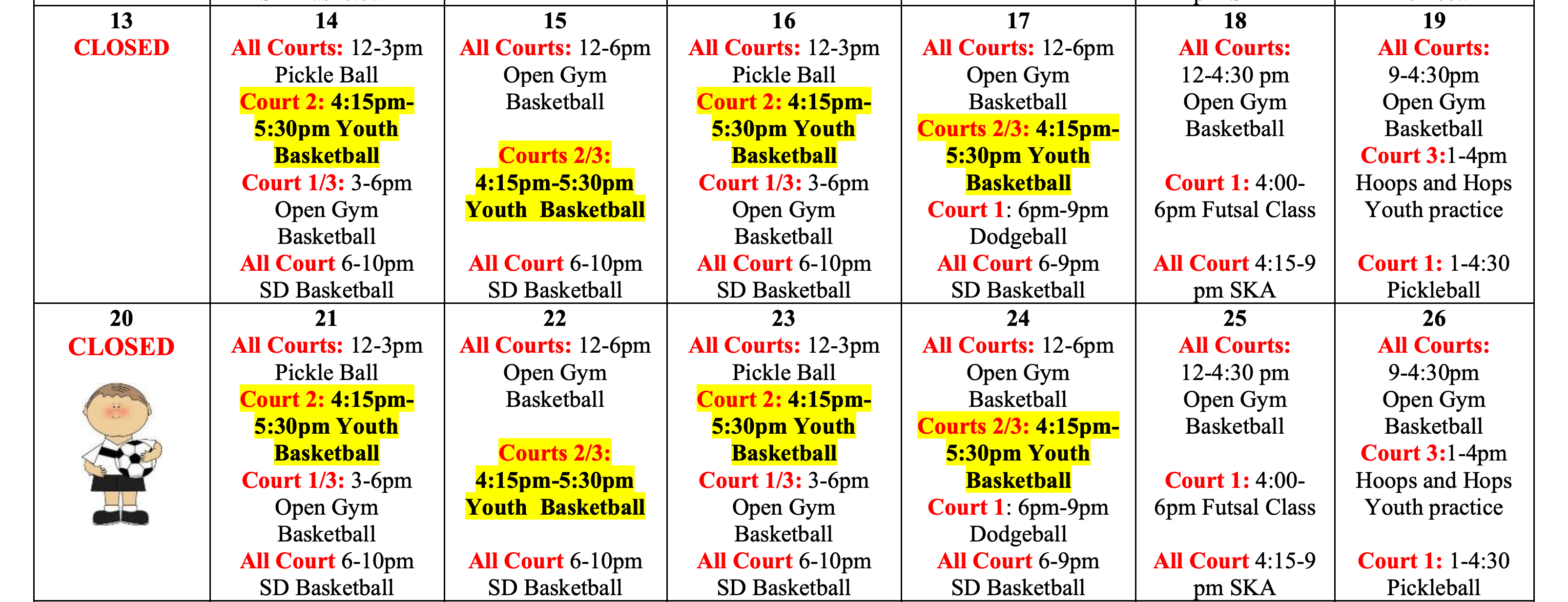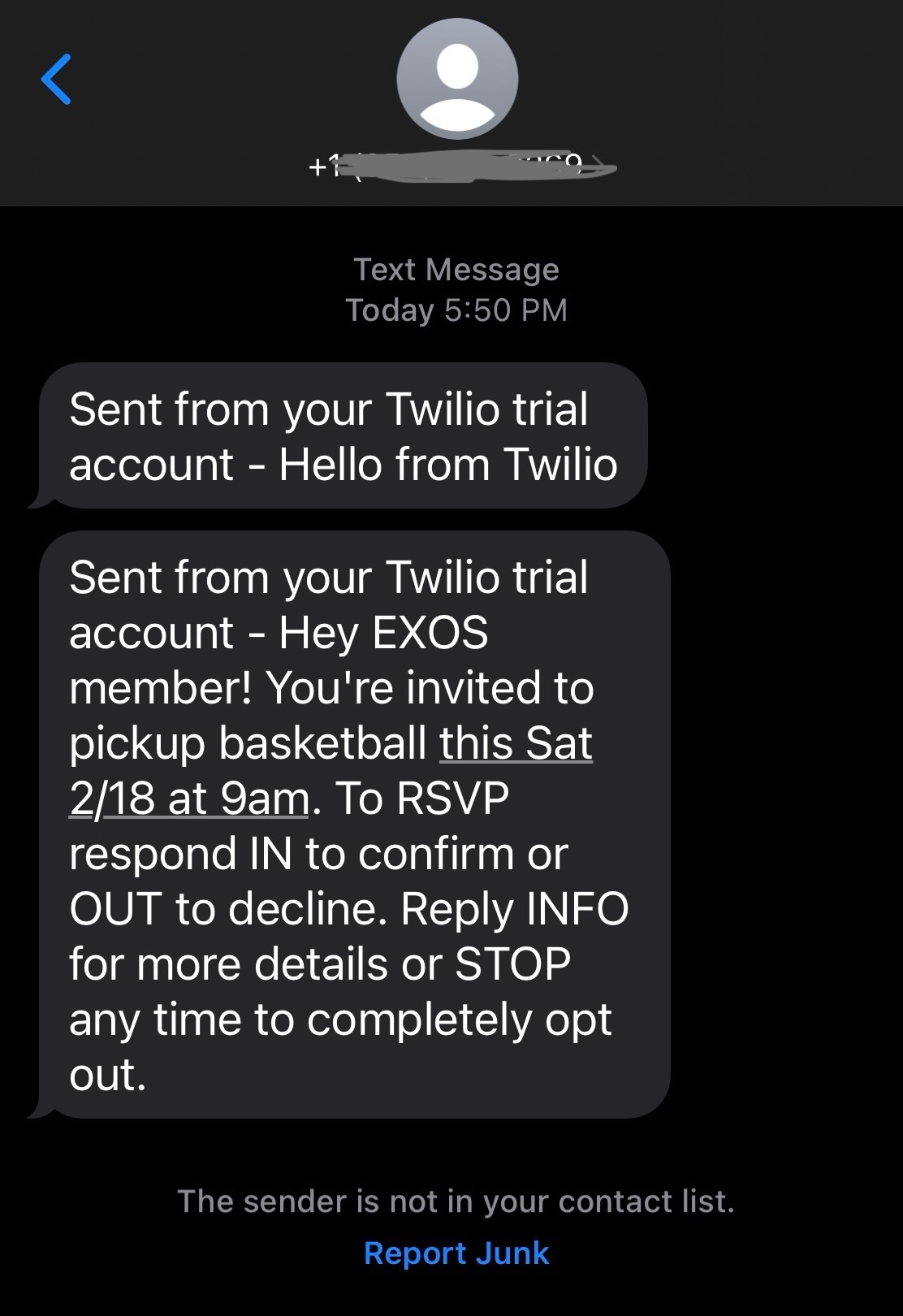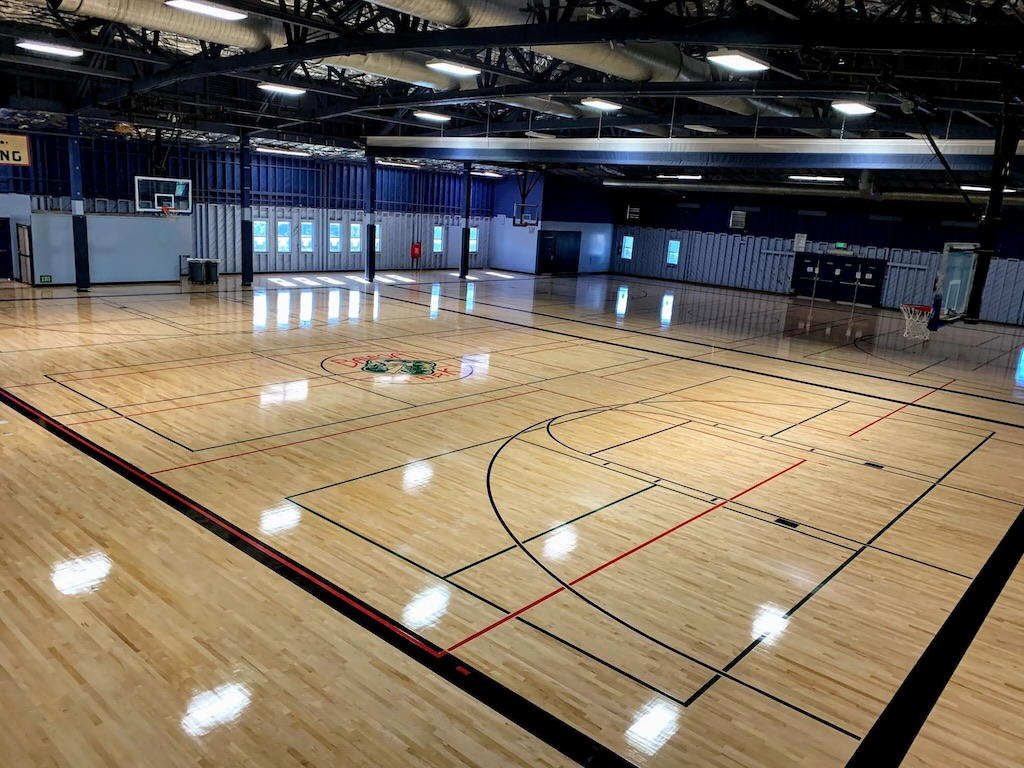Pickup basketball is a microcosm of market dynamics, full of inefficiencies and self-regulation gone awry. My recent switch to a different gym forced me to confront these issues head-on. I knew trade-offs would be required when moving from the flagship Municipal Gym to a more run-of-the-mill recreation center near me. The floors aren’t maintained to quite the same standard, and instead of three indoor courts, there is only one. But in all, it was a willing trade off to hopefully find good, fun pickup runs more consistently.
The new location operates with a feature of transparency that is pretty uncommon in pickup basketball; the hand-written list to reserve the next game (and the ones after that). When you show up, you just put your name down on the next empty slot and your place in line is established. But even with this attempt at increased transparency, issues remain.
This struck me as a unique opportunity to dive into the overlap of two topics I’m very passionate about; economics of market systems, especially market efficiency and self-regulation coupled with the accessibility of adult recreational sports.
Analytics don’t work. It’s just some crap that people who were really smart made up to try to get in the game because they had no talent…
– Charles Barkley
Identifying Market Forces
First off, the irony of analyzing public goods1 (city-run recreation centers) for free-market efficiency is not lost on me. Nevertheless, I find it helpful (and fun!) to break down the incentives to explore optimizations that may improve outcomes, even on the margin. Not to mention that the biggest national news story this year so far revolves around our President not seeming to understand who pays for tarriffs. I digress…
In the environment of congestible public goods, losing a game often means having to wait two or even three games before you can play again. While the courts are open to everyone equally, periods of high demand can make for rather long waits. Thus, the profit motive in this market is to win games, thereby maximizing playing time for as long as the winning players wish to continue. Surely, some players are incentivized to do more or less depending on their play styles, and certain players will pursue slight variations on winning above all else; cameraderie or safe play (and injury prevention), or cardio or execution of strong fundamentals other than individual scoring.
There are some generally accepted regulations in this market. For instance, you call your own fouls, and feedback may be given, but any real disputes can quickly be challenged to shoot for it as a sort of possession arrow. If somebody hits the ground, either because they slipped incidentally or not, play generally stops to ensure they player is OK and any risks like a wet floor are addressed before play resumes.

Sample 2-week schedule of the premier San Diego Municipal Gym
Signs of Inefficiency
My biggest gripe with pickup basketball I most often see (and relucantly concede to) is the de facto scoring method; by ones and twos instead of 2s and 3s, as is customary in every other level of the sport. I’m unsure why this is universally adopted in pickup. Maybe scoring disputes are less likely to arise when simplifying the math. I dislike this because it introduces an unprecedented weight on three-point shooting. When one team trails by a large margin and needs to get back into the game, the incentive on a breakaway may be to forego the easy layup and kick out for double the points. Ask any coach if they were to witness their players try this, and I guarantee they would be riding the pine at the next whistle.
The other sign of poor play is when a game is tied down the stretch. Rather than smartly playing out the clock and seek a good shot, since there is no game or shot clock, teams can milk their possession. Suddenly both teams actually play defense, but usually too aggressively, fouling every shooting attempt without any repercussion.
In both of these cases, the invisible hand that guides the market towards the most efficient outcomes seems a little misguided. When players seek to avoid losing in blowouts or close games, they’ll deviate from their default and prolong a game to the detriment of the players waiting. In essence, the winning optimization pursued by individual teams or players limits the market’s output as a whole, in the form of fewer games played.
These shortcomings of this market were made especially transparent when I recently stumbled on a unique system at a new gym.
The Limits of Self-Regulation
I recently encountered a unique self-regulatory mechanism in a nearby public indoor gym; the written list for reserving slots on the next game(s). When users arrive (or after losing a game), they simply write their name on the list to fill a spot on a team. In theory this is a nice forcing function of transparency.
The intention behind the written list is good, but in practice, what ends up happening is people get tired of waiting, so names get crossed out (or don’t) and when the next team is up the 5 listed players are not all present. This has a cascading effect2 where all the next teams need to shuffle somehow in order to make sure each team has five players.
Some players who frequent this gym game the system, so they aren’t stuck with random players, but they can load up the team with their friends by writing down their names even before they’ve arrived. On one occasion recently, I was up next, but due to unannounced absences, we needed a couple players to make a whole team. The next team up was uninterested in filling the vacancies so they could retain their 5-man team as they had planned. For the next few minutes, we had to seek out players that were interested in playing. This ate up time, and the team that eventually formed lacked any semblance of cohesion.3
Regulatory Framework
The ideal scenario would be for more courts to be available for pickup basketball, but supply is mostly fixed. Especially during basketball season, as many recreation centers are booked up with programs most nights of the week, few of which are actually paid for privately. Only a few years ago did the San Diego gyms finally start publishing their open play schedule online so that I could research which locations would be open.
Most of the city recreation centers are equipped with scoreboards, but these are rarely used.4 Nevertheless, I’ve brainstormed just a few modifications I would like to experiment with in pickup games that I think could really improve the number (and quality) of games during open play:
- Scoring to 9, all buckets by one
- Running game clock 12 minutes (via existing scoreboard, when available)
- 30-second shot clock during the final 2 minutes (additional hardware required)
- If a team wins 3 straight games, they take a one-game rest, resuming afterwards vs. the previous winner.
Scoring games to nine by one point per basket is roughly equivalent to playing to 21 by twos and threes, which, if you’re willing to employ a scoreboard, offers a stronger alignment to traditional scoring, and, in my view, fairness. Some of these regulations are closer to college or professional levels, but I recognize there may be limits when trying to copy what professionals do at the amateur level— it’s a lot harder than it looks.5
I also include a couple of rules to limit the duration as a forcing function that encourages smart play; good defense should be rewarded with a shot clock violation; teams with the lead should still seek good shots.
Lessons for the Real World
One novel approach that I’m planning to research is the community center in the neighboring city of Coronado. They manage a pretty packed schedule, but offer longer hours6 than San Diego rec centers. Admission for me (a non-resident) will be $4 but this might reflect the market equilibrium for a slightly better product. For comparison, to rent courts from the City of San Diego directly (as many organizations do) the price is approximately $50/hr. And, interestingly, another order of magnitude ($333 per hour) for gym space from San Diego Unified School District.

I’ve also been thinking through the requirements of a technology-powered automation that could really deliver maximum efficiency for all parties involved. Essentially, what ClassPass does for spin and yoga studios, I want to see for pickup basketball. Many of the features to control for overcrowding are already baked in; a class would be limited to the ideal number of players, with up-front collection of value and punishment for late cancellations or no-shows.
A few searches of alternative options netted me a couple options (GoodRun and Indoor Hoops) but they either aren’t very mature or don’t operate widely in Southern California. Time to find new ways to offset this adult recreational basketball deficit!
-
Public recreation centers are congestible public goods, to be more specific. This means they are non-rivalrous initially, but as demand increases, congestion and reduced benefits are experienced by all. Similar to highways. ↩︎
-
Tempting to employ the phrase trickle down here, but that would be irresponsible of me, because I strive to maintain a basis in objective facts and reality. ↩︎
-
We lost zero to seven, very quickly. Also known as skunked. This is the straw to break the camels back and elevate this topic to blog-post territory for me. ↩︎
-
On a few recent trips to my local rec centers, I asked if the existing scoreboards would support the addition of a shot clock if an anonymous donation were to be made for them. The staff were unsure whether the scoreboard technologies were too old to be compatible with a modern enhancement like shot clocks. ↩︎
-
One time, while playing disc golf on a shared course (ball & disc golf together), my friend who doesn’t follow golf politely asked, Is everyone just terrible at golf? He merely was observing the same principle. ↩︎
-
A back-of-the-napkin analysis of other activities hosted by the nearby activity center uncovers a wide disparity in hours (or court-hours) for open play among badminton, table tennis, and volleyball when compared to basketball. This comes before the large budget deficit forces cuts to recreatio hours in San Diego. ↩︎
